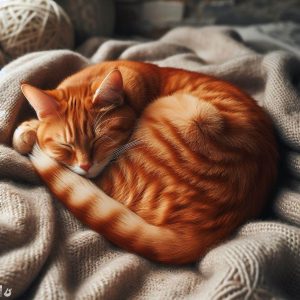Is your feline friend having potty accidents around the house? Are medical issues causing bathroom problems for your cat? Diapers may provide a solution!
Cat diapers allow kitty to comfortably relieve themselves while containing any leaks and messes. When used properly, they prevent soiling of home furnishings.
But can cats really wear diapers? Let’s discuss the ins and outs of diapering your furball.
Reasons to Diaper a Cat
Diapers for cats serve several key purposes:
For Medical Conditions
Certain conditions like urinary incontinence, bowel issues, and cognitive decline can cause bathroom accidents in senior cats. Diapers soak up leaks to keep your home clean.
During Heat Cycles
Unspayed females bleed when in heat. Diapers contain the discharge so it doesn’t stain floors and furniture.
After Surgery
Diapers may be needed for urinary and bowel control if your cat had abdominal, urinary tract, or spinal surgery. They prevent messes as kitty recovers.
For Anxiety Problems
Marking territory and inappropriate urination can result from stress in some cats. Diapers limit damage while the underlying issue is addressed.
So for elderly, unspayed, recovering, or anxious cats, diapers provide a practical way to manage bathroom problems. Now let’s look at what to consider when diapering your kitty.
Factors About Cat Diapers
There are some important factors to weigh when deciding if diapers are right for your cat:
Breed Suitability
- Best for hairless cats, disabled cats, young kittens
- More challenging for longhaired breeds – fur can cause irritation
Cats May Resist at First
- Diapers feel odd to most cats initially. Allow an adjustment period.
- Offer treats and praise as positive reinforcement during diapering.
Requires Maintenance
- Diapers must be changed frequently to avoid skin issues.
- The cat’s bottom area must be cleaned during each change.
Not for All Situations
- Diapers are messy for feces – better for urinary issues. Consider doggie diapers for bowel movements.
- They don’t solve behavioral marking problems – may just redirect issue.
Safety Precautions Needed
Cats can get front legs caught in diapers or try to remove them. Supervise your cat when diapered. Check for chafing and irritations.
So diapering cats takes effort but can be worth it. Speaking with your vet helps determine if it’s the right solution for your cat’s situation.
Choosing Cat Diapers
Many options exist when shopping for diapers for your kitty. Consider these factors when selecting:
Disposable vs Reusable
Both disposable and reusable cloth diapers are made for cats. Disposable offers more convenience but reusable is more eco-friendly. Budget and personal preference typically guide choice between the two.
Correct Fit
Measure your cat’s waist and choose the right size. Diapers should be snug enough to stay on but not constricting. Allow room for a furry belly without sagging in the back.
Absorbent Core
The interior soaking pad must be substantial enough for your cat’s bladder or bowel capacity. Look for extra absorbency if needed.
Tail Hole
Diapers should have a hole so your cat can keep its tail lifted. Make sure the hole is placed properly for your cat’s tail anatomy.
Fastenings
Adjustable Velcro fasteners around the waist offer a customized fit. Elastic bands or tie straps also work but have less give.
Pick diapers designed specifically for cats over makeshift solutions. Let’s look at some top options.
Recommended Cat Diaper Brands
Here are some top-rated diaper choices for cats:
* Pet Parents Washable Diapers – $16 for 3, reusable
- Soft microfiber outer, 4 layer absorbent core
- Built-in tail hole, Velcro closures
- Good for urine incontinence
* Wegreeco Disposable Cat Diapers – $25 for 12
- Ultra-absorbent padding, wetness indicator line
- Easy on/off design with fur-friendly tape
- Good for multi-cat households
* Kitty Kan Disposable Diapers – $37 for 25
- Super absorbing polymer core
- Adjustable fit, dynamic leg gathers
- Ideal for heavier urine, fecal incontinence
* Pets Lovers Premium Cloth Diapers – $20 for 5
- Breathable outer, soft fleece lining
- Sturdy Velcro fasteners, customizable fit
- Good for heat cycles, spraying, elderly
Talk to your vet about which style may be best for your cat’s specific needs. Buy a multi-pack so you always have replacements on hand.
Getting Your Cat Comfortable with Diapers
Introducing diapers in positive, gradual steps helps cats accept them more readily:
Let Them Sniff
Allow your cat to inspect, sniff, and paw at the diapers to get familiar with the material and scent.
Try Short Sessions
Put diapers on for just brief 5-10 minute sessions initially. Reward with treats after removing, then slowly extend time worn.
Use Catnip
Sprinkling a little catnip on the outside of the diaper can make your cat associate it with pleasing smells.
Be Patient
It may take days or weeks of coaxing before your cat gets fully comfortable wearing diapers for longer periods. Stay calm and positive.
Get kitty used to diapers without stress or force. With proper introduction and positive reinforcement, most cats can tolerate diapering quite well. Now let’s go over proper fitting.
How to Put a Diaper on a Cat Correctly
Follow these steps for smoothly diapering your cat:
Have Ready
- Diaper
- Non-allergenic baby wipes
- Treats
- Plastic bag for waste
Clean the Area
Gently wipe your cat’s bottom, groin, and genitals with a baby wipe to remove any urine or feces remnants before putting on a fresh diaper.
Allow to Dry
Let the area air dry or blot gently with a towel so the skin is nice and dry before diapering.
Position the Diaper
Place the diaper under your cat’s belly just behind its legs. Pull the front up over groin.
Attach Waist Straps
Fasten the waist straps fairly snugly, but make sure no fur gets caught. Check that your cat has room to move and breathe comfortably.
Thread the Tail
Guide the tail down through the hole so it hangs freely. Adjust the diaper layers under the tail as needed.
Reward Success
Give your cat pets and treats for cooperating with the diapering process!
Check for any pinching, chafing or irritation and adjust the diaper if needed. Monitor your cat closely until they become accustomed to wearing diapers.
Ongoing Diaper Care Tips
To keep your cat comfortable and avoid problems when diapering, be sure to:
- Change often – Swap out soiled diapers after 2-3 urinations or 1 bowel movement.
- Prevent leaks – Check fit and absorbency. Use overnight diapers for extra protection while sleeping.
- Watch skin – Clean with plain water and apply diaper rash cream to any irritated areas.
- Maintain fur hygiene – Keep fur neat around diaper area. Clip if the coat is very thick.
- No licking – Discourage licking of diaper area to prevent infections. Use an Elizabethan collar if needed.
- Dry after baths – Towel coat well and allow fur to fully dry before rediapering to avoid chafing.
- Avoid stress – Monitor for signs of distress like vocalizing or trying to remove diaper.
With frequent diaper changes, skin checks and positive reinforcement, most cats can adjust to wearing diapers with no issues.
Transitioning Your Cat from Diapers
Once your cat’s medical issue resolves, you’ll want to wean them off the diapers. Here are some tips for smoothly transitioning your cat back to normal litter box use:
- Gradually increase time between diaper changes to help your cat re-establish bathroom habits.
- Restrict access initially – Limit roaming to 1-2 rooms with litterbox until fully retrained to use it.
- Keep litterbox extremely clean – Scoop very frequently and change litter regularly to encourage use. Try cat attractant litter.
- Reward potty success – Offer treats and praise every time your cat uses the litter properly.
- Confine overnight at first – Use crate or bathroom confinement overnight to prevent any regression accidents.
- Watch for setbacks – If accidents recur, speak to your vet about whether to reintroduce diapers for a period.
Be patient and consistent. With time, your cat should readapt to their regular litter routine after diapers.
Are Diapers the Right Choice?
While diapers can be useful management tools in many cases, they aren’t right for every situation. Consider these key points:
Better for urine issues – Diapers contain urine leaks well but are messier for bowel movements. Other solutions may work better for feces.
Not for behavioral problems – Diapers don’t resolve territorial marking or litterbox avoidance. Those require behavior modification.
Weigh pros and cons – Diapering requires maintenance. Make sure benefits outweigh hassles for your cat’s situation.
Use under vet guidance – Check with your vet first to choose safe, effective diapers suited to your cat’s needs.
So discuss options thoroughly with your veterinarian. Often diapers provide a safe, practical solution for senior cats with incontinence. But ensure they are tolerating diapers well and monitor closely. With patience and proper precautions, most felines can adapt to the diaper lifestyle quite successfully!
Frequently Asked Questions About Cat Diapers
Here are answers to some common questions cat owners have about diapers:
How often should I change cat diapers?
Change disposable diapers at least every 2-3 hours. Cloth diapers may require changing every 1-2 hours. When in doubt, err on the side of more frequent changes.
How do I get my cat used to wearing diapers?
Go slowly – let them sniff and inspect diapers first. Give treats and praise during diapering. Start with brief 5-10 minute sessions, gradually increasing diaper wear time.
Should I use baby diapers on cats?
No – human diapers don’t fit cats’ anatomy well. Purchase diapers specifically designed for cats to prevent chafing and discomfort.
How do you diaper a cat on heat?
Use overnight maxi-pads upside down with the wings wrapped around the cat’s waist. Dog diapers or reusable cat diapers also contain heat discharge well. Change frequently.
How can I stop my cat from taking off its diaper?
Use positive reinforcement during diapering. If your cat still tries removing it, an Elizabethan collar prevents tampering. Increased supervision also helps.
Diapers offer a practical solution for many cats with medical conditions causing bathroom accidents. Discuss using them with your vet and take care to size, fit, and change diapers properly. With patience and the right precautions, diapering can make life easier for both you and your feline!



